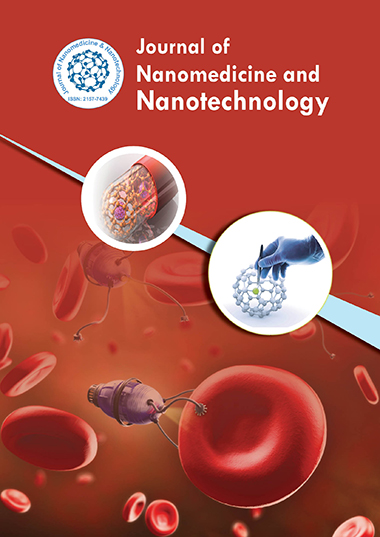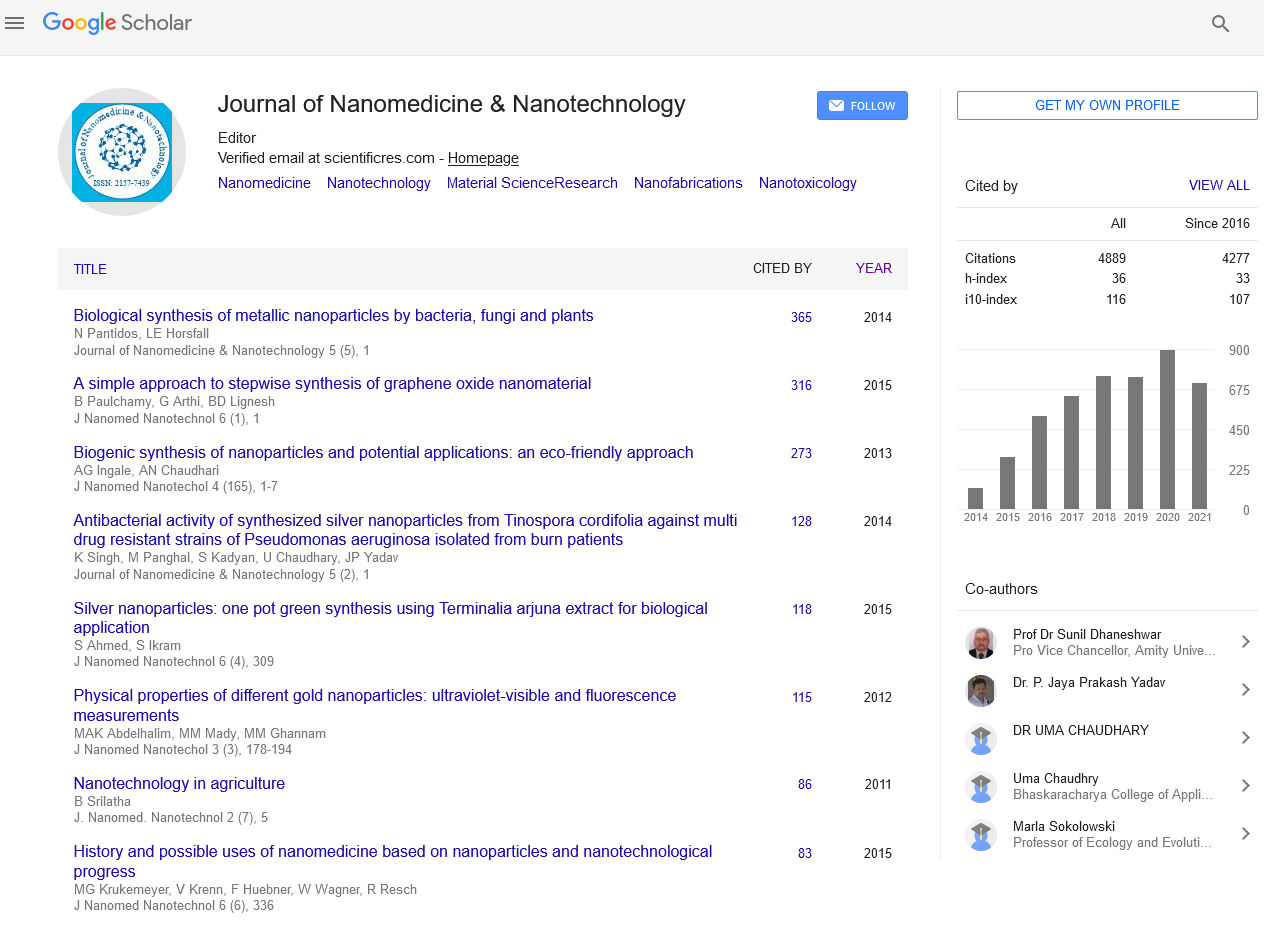Indexed In
- Open J Gate
- Genamics JournalSeek
- Academic Keys
- JournalTOCs
- ResearchBible
- China National Knowledge Infrastructure (CNKI)
- Scimago
- Ulrich's Periodicals Directory
- Electronic Journals Library
- RefSeek
- Hamdard University
- EBSCO A-Z
- OCLC- WorldCat
- SWB online catalog
- Virtual Library of Biology (vifabio)
- Publons
- MIAR
- Scientific Indexing Services (SIS)
- Euro Pub
- Google Scholar
Useful Links
Share This Page
Journal Flyer

Open Access Journals
- Agri and Aquaculture
- Biochemistry
- Bioinformatics & Systems Biology
- Business & Management
- Chemistry
- Clinical Sciences
- Engineering
- Food & Nutrition
- General Science
- Genetics & Molecular Biology
- Immunology & Microbiology
- Medical Sciences
- Neuroscience & Psychology
- Nursing & Health Care
- Pharmaceutical Sciences
Cobalt-doped nanohydroxyapatite: Synthesis, characterization, antimicrobial and hemolytic studies
15th World Medical Nanotechnology Congress
October 18-19, 2017 Osaka, Japan
Kashmira P Tank
Saurashtra University, India
Posters & Accepted Abstracts: J Nanomed Nanotechnol
Abstract:
Hydroxyapatite (HAP) or calcium apatite is naturally occurring mineral with formula Ca5(PO4)3(OH), which is usually written as Ca10(PO4)6(OH)2. It is mostly area of interest due to its application in the field as implant coating, antimicrobial agent, catalysis, chromatographic separation of proteins and DNA, drug delivery carrier and non-viral vector as gene therapy, dentistry. In the present investigation, cobalt-doped hydroxyapatite (Co-HAP) nanoparticles were synthesized by surfactantmediated approach and characterized by different techniques. The EDAX was carried out to estimate the amount of doping in Co-HAP. The transmission electron microscopy result suggested the transformation of morphology from needle shaped to spherical type on increasing the doping concentration. The powder XRD study indicated the formation of a new phase of brushite for higher concentration of cobalt. The average particle size and strain were calculated using Williamson-Hall analysis. The average particle size was found to be 30-60nm. The antimicrobial activity was evaluated against four organisms Pseudomonas aeruginosa and Shigella ям?exneri as Gram negative as well as Micrococcus luteus and Staphylococcus aureus as Gram positive. The hemolytic test result suggested that all samples were non-hemolytic. The photoluminescence study was carried out to identify its possible applicability as a ям?uorescent probe.


